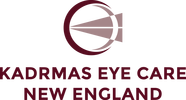FormsEveryone may experience symptoms of ocular migraines differently. There are also a couple of types, including: Ophthalmic migraine: This is a visual aura that manifests in many different ways and does not have a headache and typically lasts about 20 minutes. It is like a classic migraine which has the aura but does not have the headache afterwards. Migraine with an aura: This is a common form of migraine. According to the American Migraine Foundation, about 20 to 30 percent of people with migraines have visual auras. The aura tends to only last a short time and may occur with or without head pain. In many cases, the aura occurs before head pain starts and acts as a warning that a headache is about to start. SymptomsThe visual symptoms of an ocular migraine may vary from person to person. Individuals may also experience symptoms differently each time they have a migraine. Possible symptoms of an ocular migraine include the following:
CausesThe exact cause of migraines, including ocular migraines, is not entirely clear, but it appears to involve a change in the chemicals in the brain or abnormal electrical activity in certain parts of the brain. Why some people develop visual symptoms and others don’t is not understood. In general, certain risk factors have been identified for increasing your chances of having migraines and include:
In addition, certain things may trigger migraines in some people. If you are prone to migraines, possible triggers, especially for ocular migraines, include:
TreatmentThere is no one size fits all treatment for ocular migraines. Treatment may involve a combination of things to ease migraine pain. There is also no specific treatment to stop visual disturbances that can occur with a migraine. But possible treatments to reduce migraine frequency and severity include: Identifying triggers: One of the best ways to reduce migraine frequency is to identify triggers. In some cases, such as fluctuating hormone levels, it may be challenging to reduce the risk. But in other instances, reducing triggers may include limiting certain foods or alcohol. Medication: Different types of medication can help treat migraines. In some cases, it is trial and error to see what works best for you. Possible types of medications include calcium channel blockers, low-dose aspirin, and triptans, which target serotonin receptors. Hot or cold: Although it does not work for everyone, some people find a decrease in symptoms when applying a hot or cold pack to their head. Applying hot or cold provides a natural way to reduce pain without medication. PreventionPrevention is always your best bet when it comes to migraines. Consider some general prevention tips:
If you have ocular migraines and have any questions, we are happy to help. Also, consider having regular eye exams to rule out any other causes of visual disturbances. If you would like to ask whether an appointment with one of our eye doctors would be appropriate at this time, call our office at 508-746-8600. Comments are closed.
|
EYE HEALTH BLOGCategories
All
Archives
July 2024
|
|
Kadrmas Eye Care New England
55 Commerce Way, Plymouth, MA 02360
14 Tobey Road, Wareham, MA 02571 133 Falmouth Road (Rt 28), Mashpee, MA 02649 |
Phone Number:
1-508-746-8600 Hours: Monday through Friday — 8 AM – 4:30 PM |


 RSS Feed
RSS Feed
